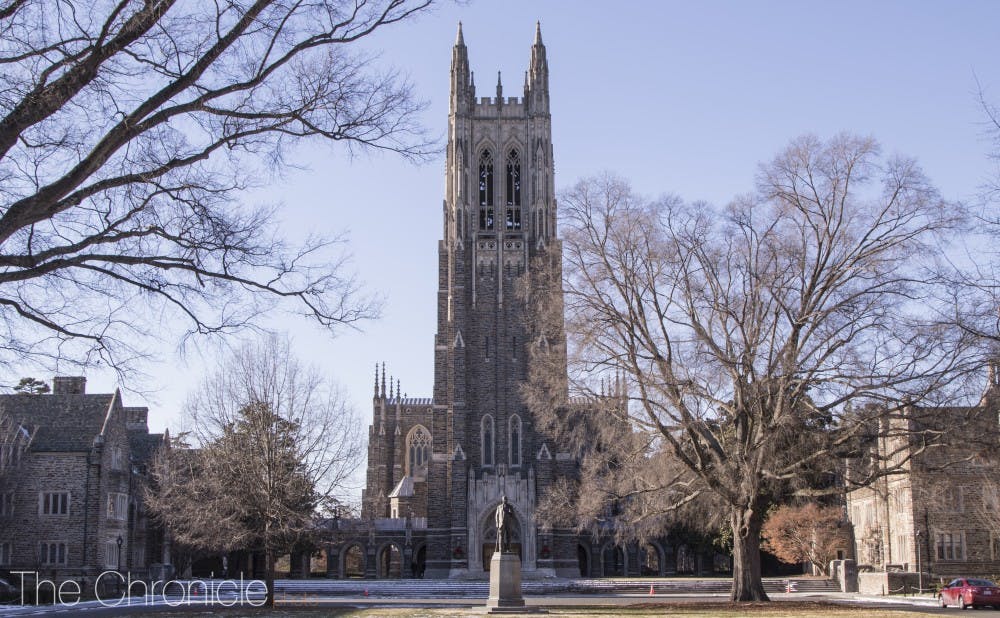Everyone recognizes the iconic Duke Chapel on West Campus, but few people might know about the laborers who actually built it.
With the help of graduate and undergraduate students, the Stone by Stone project will delve into this unsolved mystery over the summer by analyzing the University Archives and discovering the untold stories of the workforce that labored to construct the Chapel. The end product of the research will be a website or a similar resource that will showcase the names and experiences of the Chapel’s laborers.
“It was an idea that I suggested—it was something that the administration was very supportive of after the removal of the Lee statue last summer,” said University Archivist Valerie Gillispie, who is sponsoring the project. “They’ve been looking for a way to sort of follow-up and think more about the Chapel and what it represents and what it means to people.”
Although there has been quite a bit of research devoted to Julian Abele’s role in designing the Chapel and other areas on West Campus, she explained, very little work has been done to identify the manual laborers who built the Chapel.
The project—a Story+ Project run by the Franklin Humanities Institute—will include undergraduate and graduate students working during the first summer session. It will receive funding from the office of the vice provost of interdisciplinary studies, said Ranjana Khanna, professor of English and director of FHI.
Gillispie said that the students participating in the project will be “using original archival materials from the University Archives and other sources to try to gather a list of names of people who worked on the Chapel.”
After collecting this information, the students will then consult other biographical sources to learn more about the lives of the people who provided the manual labor necessary to build the Chapel, she added.
“They’ll be looking at how different people were paid, whether there were racial dimensions to the types of work that different people did,” Gillispie said.
The end goal for the project, she mentioned, would be some platform allowing this recently revealed information to be shared with anyone who is interested. This could be a website or another type of publication.
Khanna emphasized that this project was coming “in a moment in which we’re trying to assess our own relationship to the past” and will acknowledge “the form of invisible labor that goes into the constitution of anything like a university.”
Gillispie noted that the archives are full of information about faculty and students, but not so much documentation is focused on the staff, especially manual laborers.
Although it is not practical to gather information about every single person who worked on the Chapel, Gillispie added, telling some of their stories will allow Duke’s current residents to appreciate the contributions of these—until now—unnamed workers.
“The Chapel is very much the symbol of the University,” she said. “It’s the focal point on West Campus, and the story behind how it was made and who made it was an important one."
Get The Chronicle straight to your inbox
Signup for our weekly newsletter. Cancel at any time.

